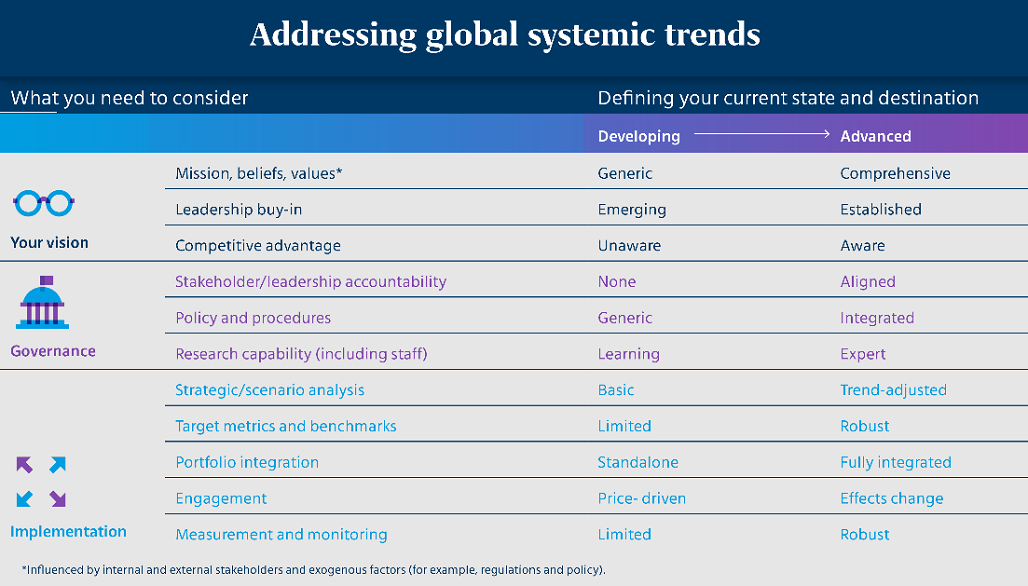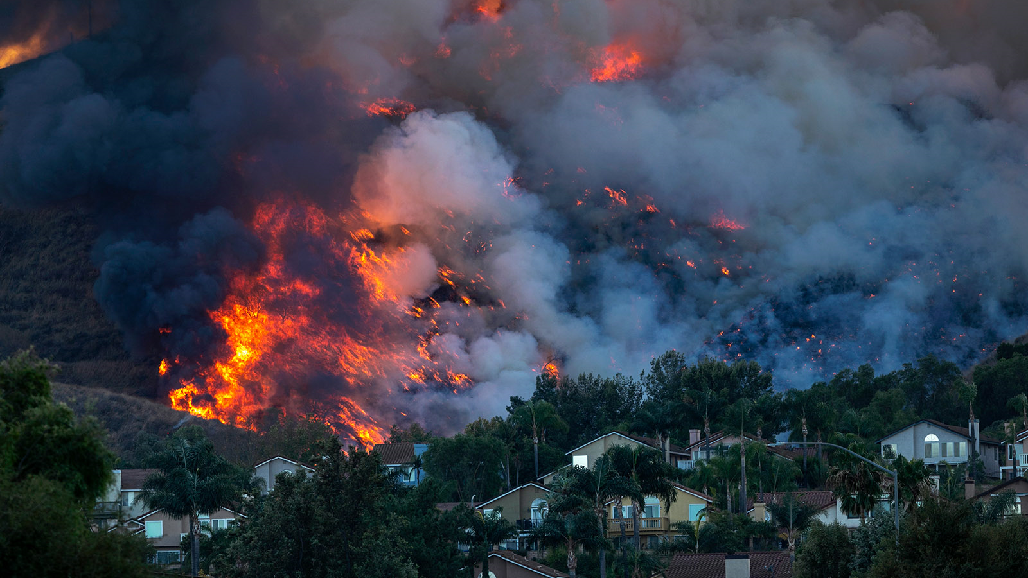Photo: David McNew/Getty Images
Flames rise near homes during a wildfire in California. Investors need to consider the physical risks associated with climate change and how they could adversely impact assets.
After a year of reacting to the many risks brought upon by COVID-19, institutional investors need to adapt in an effort to protect their portfolios and harness opportunities for future risk-adjusted returns.
Climate change, low and negative interest rates, technological evolution, demographic shifts, geopolitics and water security are leading risks for investors. For example, in relation to climate change, investors need to consider the physical risks associated with climate change and how they could adversely impact assets. These include the risk of stranded assets as a result of the transition to a low-carbon economy. Additionally, technological evolution provides many potentially attractive investment opportunities, but investors need to have the organizational culture and resources to take advantage of them.
While investors know there are many issues to tackle across all of these trends, many are challenged by how to go about it.
To try to mitigate the major risks that investors face from these systemic trends, institutional investors need to scrutinize, adapt and adjust their portfolios and capture potential opportunities to pursue attractive returns. Yet, Mercer research shows that many institutional investors have made only some or limited progress on most of these trends.
As a starting point, it is vital for investors to have visibility into how they can amend their approaches so they can begin to align with what they believe are best practices and be in a better position to plan for the unexpected.
A Framework for Investment Decisions
A framework for addressing global systemic trends can assist investors in measuring their own progress and comparing it against their peers. Investors can use a framework, like the one below, alongside case studies, to help them determine: “Are we still in development mode in addressing these systemic trends? What can we do to be more like the investors that are leading the way?”

Advanced Investors Share Certain Traits
The answers to such questions help asset owners understand and address gaps in how they address systemic trends. Asset owners who are advanced in this process often have several traits in common, including diversity of thought, commitment to strategic vision and a willingness to collaborate. They also integrate global systemic trends into their strategic decision-making processes — a complex but worthwhile effort.
6 Traits of an ‘Advanced’ Investor
Advanced investors value:
- Diversity of thought: embracing cognitive diversity and drawing on varied experiences and specialized expertise to access insightful perspectives.
- Accurate self-assessment: having the courage to hold up a mirror to the organization — an ability and willingness to draw from internal and external stakeholders to understand and address organizational shortcomings.
- Commitment to strategic vision: sharing the belief that taking action today on factors that affect the portfolio over the long term will result in enhanced risk-adjusted returns.
- Commitment to transparency: clearly communicating to stakeholders from the board and senior leadership regarding beliefs, vision and objectives so that stakeholders align and contribute toward goal fulfilment.
- Culture of innovation: prioritizing developing new expertise, questioning existing norms and exploring emerging investment themes and processes.
- Willingness to collaborate: committing to sharing best practices with peers and stakeholders so that the industry evolves more quickly, positively affecting regulations and policies.
Does the Organization’s Size Matter?
An organization’s size is not necessarily a critical factor for becoming advanced. Rather, part of an organization’s progress depends on senior leadership agreeing on how systemic risks affect its mission, beliefs and ability to achieve investment objectives. For smaller investors, who use a consultant in place of in-house expertise for advice and implementation, the practical steps are still relevant.
Rather than wait for systemic trends to negatively impact risk-adjusted investment returns, investors who begin now can both get ahead in their efforts to mitigate the risks to their portfolios and explore ways to identify opportunities that could deliver long-term returns. Advanced investors also have the potential to help build a more resilient economy that considers the future needs of all stakeholders.
Related themes: CLIMATE CHANGE INVESTMENT RISK MITIGATION
 Fiona Dunsire
Fiona Dunsire
Wealth Leader of Growth Markets at Mercer
Fiona Dunsire is a wealth leader of growth markets at Mercer. She is responsible for developing Mercer’s business in retirement and investments across the growth markets of Asia, Middle East, Africa and Latin America.
How Can Large Asset Owners Make the Most of Nontraditional Risks?
 Ashley Knight
Ashley Knight
Project Fellow of Future of Investing at World Economic Forum
Ashley Knight is a project fellow of the future of investing at World Economic Forum LLC. She is currently representing Mercer as a fellow in New York City. At Mercer, she was most recently responsible for North America’s private debt business and a member of the Sustainable Opportunities Investment Committee.
The original articles were be read in the Brink’s website HERE


Leave a Reply